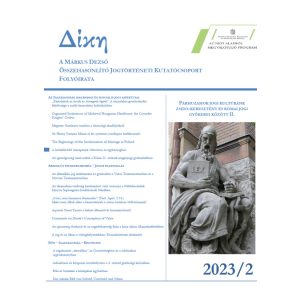Szerző: Tóth J. Zoltán
Pécsi Tudományegyetem Állam- és Jogtudományi Kar 2023
Az eredeti nyelvű leírás hiányzik.
*****
One of the eternal “core issues” of legal philosophy is the contemplation on when we can and cannot speak of law in the case of a social control mechanism, i.e. what social and political conditions must exist for the subsistence of positive law to be called into question. Related to this is the necessary examination of the conditions under which the state – which also constitutes law – ceases to exist, when it is clearly no longer able to perform its social regulatory function and to enforce the obedience of its subjects or citizens. The assessment of these borderline situations has always been controversial. However, there is still no exact method for determining when a state ends, when a legal system ceases to exist, nor what a state can do to protect itself in the event of situations threatening to disappear, what moral philosophical principles justify it in operating certain mechanisms of self-defence, or what kind of extra ordinem regulation can be prescribed in such occurrences. The present study, through the examination of the most important paradigms in the history of ideas, attempts to review the historically significant answers to this question.
A részletes adatlapot a képre vagy a címre kattintva érheti el.
Ingyenesen letölthető, open access kiadvány.
















